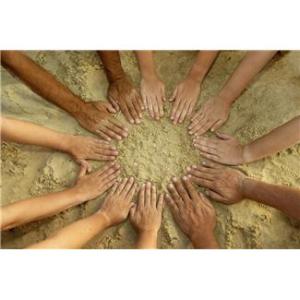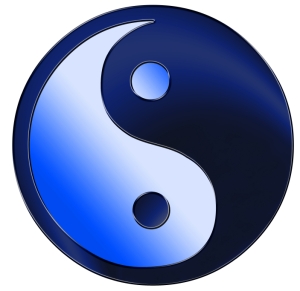 Every day has its own special rhythm. To know and understand more about these rhythms creates a sense of security. The overlying theme is circular and can be felt in the breath – breathing in and breathing out.
Every day has its own special rhythm. To know and understand more about these rhythms creates a sense of security. The overlying theme is circular and can be felt in the breath – breathing in and breathing out.
At school a rhythm must be set from the earliest years. In the Steiner tradition there is a morning circle, followed by play and morning tea. Steiner observed that chaotic behaviour in the child is not the child’s fault but a lack of rhythm by the parents and teacher.
 Each day is governed by a planet and each day has a different grain or colour assigned to it. By including a different grain each day, the diet becomes more varied. Colours can be used either in the clothing of the child or the adults, even by using different coloured tablecloths in the home or classroom. For the teacher, it is useful to know what day of the week a child is born on as this also determines, according to ancient wisdom, the constitution of the child. The Homeopathic Repertory also lists remedies suited to constitutional disorders, which is helpful when treating children.
Each day is governed by a planet and each day has a different grain or colour assigned to it. By including a different grain each day, the diet becomes more varied. Colours can be used either in the clothing of the child or the adults, even by using different coloured tablecloths in the home or classroom. For the teacher, it is useful to know what day of the week a child is born on as this also determines, according to ancient wisdom, the constitution of the child. The Homeopathic Repertory also lists remedies suited to constitutional disorders, which is helpful when treating children.
Monday is ruled by the Moon and rice or rice water is the appropriate grain. The colour to wear or use is VIOLET. The metal is Silver and the Chinese Medicine element is Water. Astrologically ruled by Cancer, the body parts most affected by the Moon are the brain, nervous system and bladder. The child born on this day may have a sensitivity and awareness, frequently reflect on events and have a good imagination and memory.
Tuesday is ruled by Mars and Barley should be consumed. The colour to wear or use is RED. The metal is Iron and in Chinese Medicine it relates to the Fire Element. Mars rules the blood in the body, including blood pressure, temperature and adrenal glands. The head, face and reproductive system are affected by the planet Mars and the months are Aries and Scorpio. The child born on this day may have fire, passion, energy, assertiveness and willpower.
Wednesday is ruled by Mercury and Millet is the appropriate grain. The colour to wear or use is YELLOW. The Mercury constitution is often disordered by coughs and colds. The body parts affected are the respiratory system, nerves and the mind can be quite active although changeable. The Chinese Medicine element is Air and the astrological signs are Gemini and Virgo. A Mercury child may have an active intelligence, good communication skills, the power to reason and a love of learning through speech and writing.
Thursday is ruled by Jupiter and the grain that should be consumed is Rye. The colour to wear or use is ORANGE. The metal is Tin, and areas of the body affected may be the liver, gallbladder, digestion, thyroid, hips, navel and feet. Sagittarius and Pisces are Jupiter months. The Chinese Medicine element is Earth. A child born on this day may have enthusiasm, optimism and a benevolent nature, wisdom beyond their years and the capacity to create opportunity and growth.
Friday is ruled by the planet Venus and Oats should be eaten. The colour to wear or use is GREEN. The metal for Venus is Copper and the astrological connections are Libra and Taurus. The urinary & reproductive systems are ruled by Venus and the Chinese Medicine element is Water. Children born on this day may have a sociable and affectionate constitution. They enjoy harmony, comfort and beauty.
Saturday is ruled by the planet Saturn and the grain is Corn. The colour is BLUE. The metal for Saturn is Lead and the Chinese Medicine element is Earth. Astrologically it is ruled by Aquarius and Capricorn. The body parts most affected by Saturn are the spleen, bones and joints and the spinal column. A child born on this day may be noticed by its love of order and discipline. They are often idealistic and have a strong moral sense, living life in integrity.
Sunday is ruled by the Sun and Wheat should be eaten. The colour is WHITE. The metal for the Sun is Gold and the astrological connection is Leo. The Chinese Medicine element is Fire and the heart, circulation, blood and vision may be areas to watch. Children born on this day may have energy to spare, vitality, leadership and willpower, tempered with compassion, love and generosity.
 In Lotus Alchemy, which emphasises the transformation of the human being, there are also the 7 stages of life that correspond to the planets:
In Lotus Alchemy, which emphasises the transformation of the human being, there are also the 7 stages of life that correspond to the planets:
Birth to 7 – Moon
7 to 14 – Mercury
14 to 21 – Venus
21 to 42 – Sun
42 to 49 – Mars
49 – 56 – Jupiter
56 to 63 – Saturn
63 to 70 – Moon
70 to 77 – Mercury.
 Many years ago whilst still teaching, a professional development activity required us all to undertake an assessment as part of a personal growth program. I can’t remember which assessment it was, but it measured several key areas – a bit of a combination of a psychological and aptitude profile to see if we were mathematically or logically aligned as well our artistic and creative abilities. It also included whether we had strong spiritual beliefs as well as our communication skills. It certainly wasn’t about
Many years ago whilst still teaching, a professional development activity required us all to undertake an assessment as part of a personal growth program. I can’t remember which assessment it was, but it measured several key areas – a bit of a combination of a psychological and aptitude profile to see if we were mathematically or logically aligned as well our artistic and creative abilities. It also included whether we had strong spiritual beliefs as well as our communication skills. It certainly wasn’t about I had just finished a 4 year Steiner Teacher Training course and had discovered that I enjoyed exploring subjects that stretched my mind. As Steiner education looks at the whole child including their health, I decided to find out more about Homeopathy.
I had just finished a 4 year Steiner Teacher Training course and had discovered that I enjoyed exploring subjects that stretched my mind. As Steiner education looks at the whole child including their health, I decided to find out more about Homeopathy. Using a variety of photos, including that of my own toolbox, we segued into how they might successfully navigate situations or people using various Emotional Intelligence strategies.
Using a variety of photos, including that of my own toolbox, we segued into how they might successfully navigate situations or people using various Emotional Intelligence strategies.










